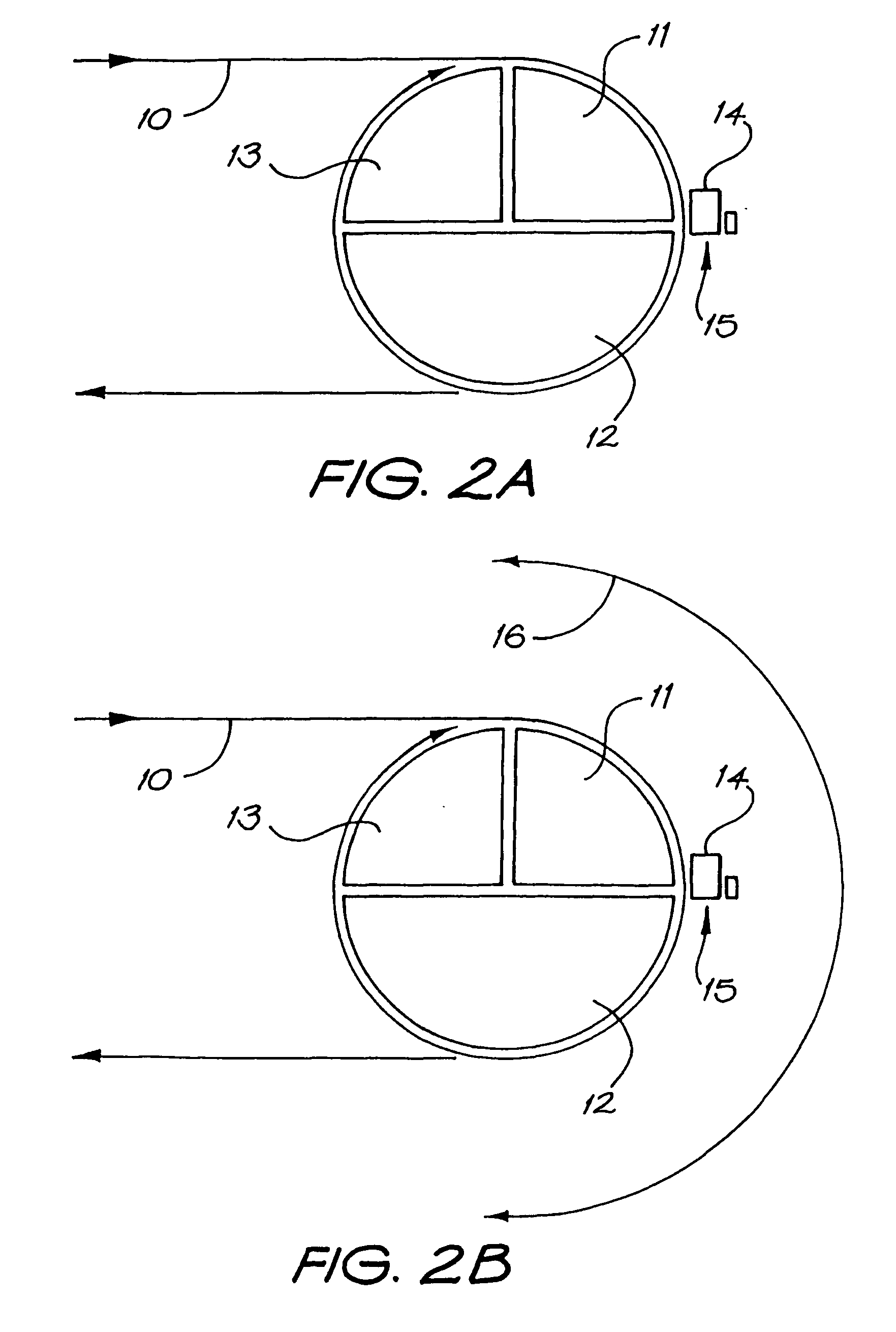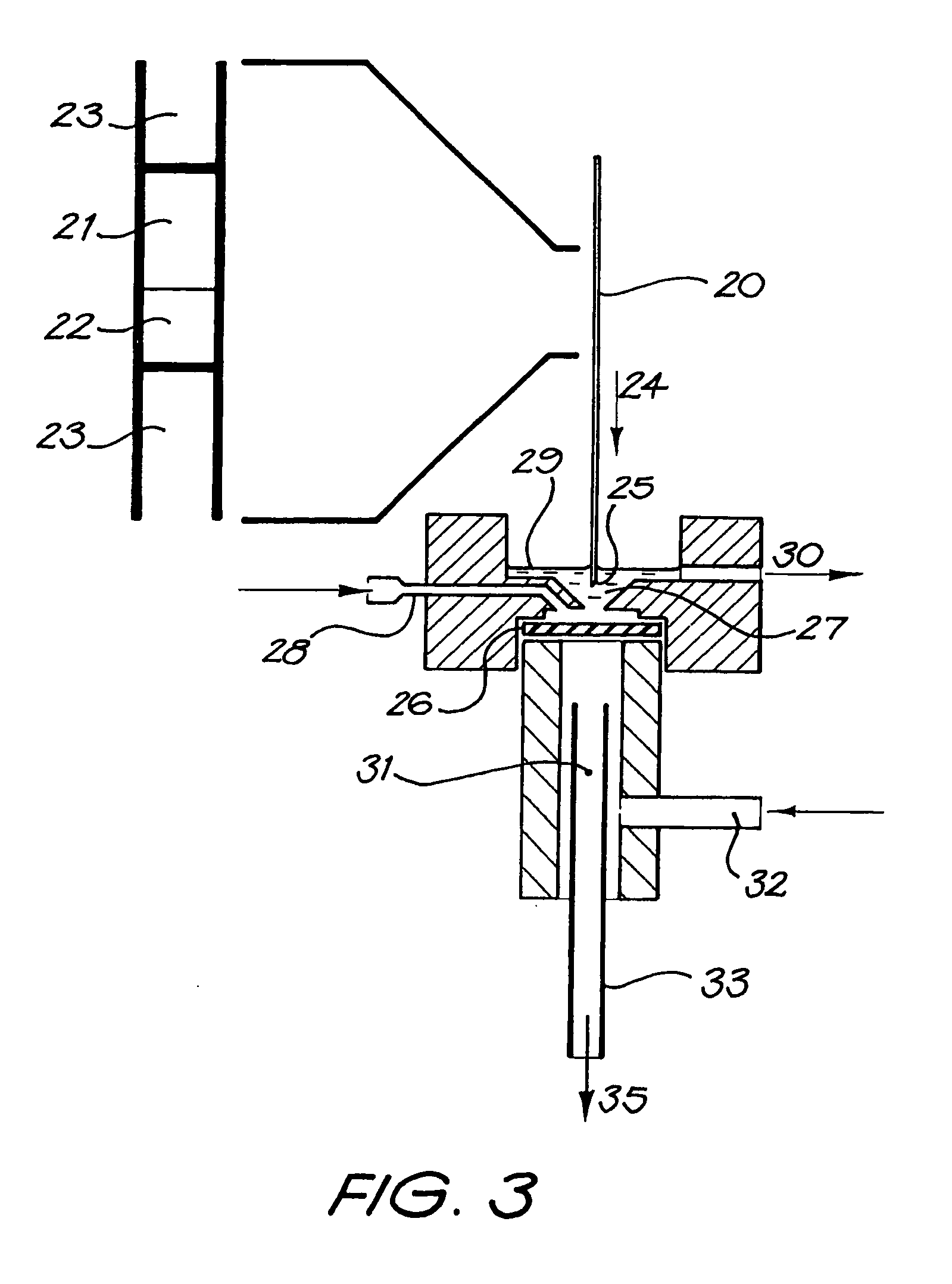Continous flow thermal device
a thermal device and continous technology, applied in the direction of biomass after-treatment, filter regeneration, refrigeration machines, etc., can solve the problems of cumbersome physical separation of heating zones from each other, inconvenient real-time monitoring of the course of reaction, etc., to reduce turbulent flow, prevent vaporisation, and reduce the effect of heat loss
- Summary
- Abstract
- Description
- Claims
- Application Information
AI Technical Summary
Benefits of technology
Problems solved by technology
Method used
Image
Examples
example 1
Operation of Injection System
[0071] The following example illustrates the operation of an injection system with the dimensions and parameters set out below. [0072] (A) Injection [0073] (1) The needle is purged with silicon carrier oil. [0074] (2) Sample and reagent are then loaded onto the needle (typically 2-50 μL), then carrier oil is loaded into the needle (typically 10-100 μL). [0075] (3) The needle is placed over the injection port, pushed down through the rubber septum, and into the 1 / 16 PTFE tubing that carries the main oil flow. [0076] (4) The contents off the needle are then injected into the oil stream and the needle is removed from the injector ready to load another sample. [0077] (B) Purging: The purpose of the purge fluid (oil or water flow) is to clean the outside surface of the needle before it passes through the septum. The purge flow is in reverse to that of the needle movement in that the flow comes up from the septum to waste. [0078] (C) Oil Inlet from Pump: A hi...
example 2
[0079] To detect DNA point mutations it is standard practice to design a synthetic piece of DNA (oligo probe typically a 20 mer) that spans the mutation site. If the probe has been designed to be 100% homologous to the wild type (normal) then these samples will have a higher melting point. For example, when the same probe hybridizes to a mutated DNA sample, there is a base mismatch and the probe is not 100% homologous and so the thermal energy required to denature the probe from the DNA target is less which produces a lower melting point. Thus by comparing melting points of different DNA samples it is possible to determine whether the sample is normal or a mutation.
[0080] Thus, DNA melt detection is carried out using one embodiment of the invention. Reference is made to FIG. 4 which schematically illustrates use of the heat exchanger in this method. That is, the heat exchanger body is heated at one end at approximately 50° C. and at the other end at approxi...
PUM
| Property | Measurement | Unit |
|---|---|---|
| temperatures | aaaaa | aaaaa |
| temperatures | aaaaa | aaaaa |
| temperatures | aaaaa | aaaaa |
Abstract
Description
Claims
Application Information
 Login to View More
Login to View More - R&D
- Intellectual Property
- Life Sciences
- Materials
- Tech Scout
- Unparalleled Data Quality
- Higher Quality Content
- 60% Fewer Hallucinations
Browse by: Latest US Patents, China's latest patents, Technical Efficacy Thesaurus, Application Domain, Technology Topic, Popular Technical Reports.
© 2025 PatSnap. All rights reserved.Legal|Privacy policy|Modern Slavery Act Transparency Statement|Sitemap|About US| Contact US: help@patsnap.com



